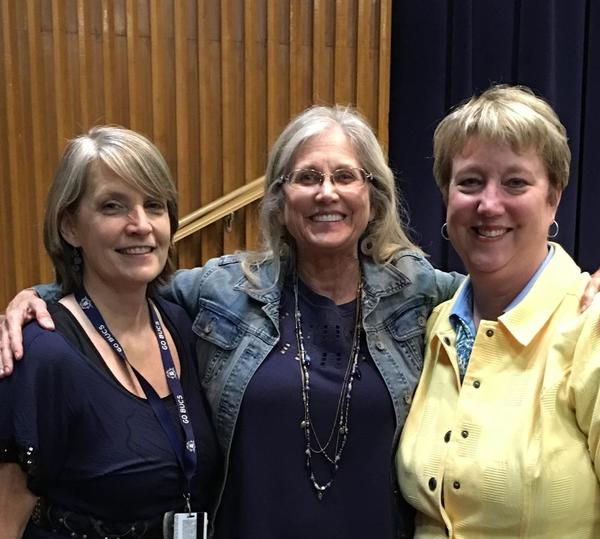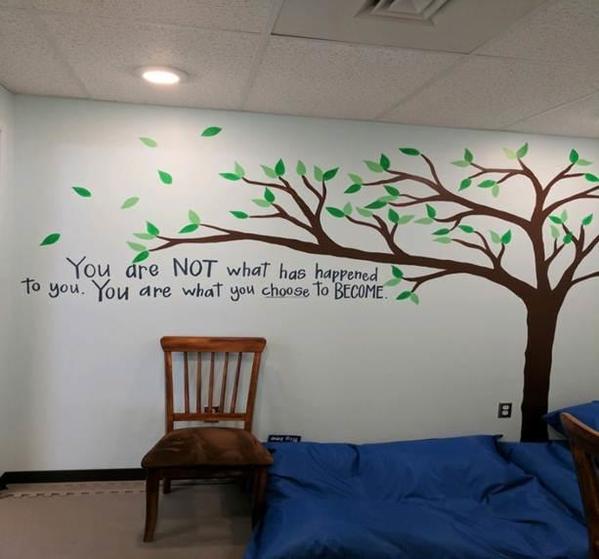Statistics recently released from the Tennessee Department of Health offer a grim reminder that 1,631 Tennesseans died from drug overdoses in 2016, which is the highest annual number of such deaths ever recorded in state history. This is an increase from the 1,451 overdose deaths recorded among Tennessee residents in 2015. “Each of these numbers represents a person, with family and friends who are now facing the loss of someone dear to them to a cause that is preventable,” said TDH Commissioner John Dreyzehner, MD, MPH. Especially concerning in Tennessee are drug overdose deaths due to stimulants like methamphetamine which increased substantially, most notably in people aged 25 – 44, where they increased from 57 deaths in 2015 to 101 in 2016. Data also identifies Buprenorphine, which is often used in medication-assisted treatment to help people recover from abuse of opioids, is increasingly associated now with drug overdose deaths in Tennessee.
Reading this report, I was reminded of the words of Dr. Vincent Felitti that first captured my attention in 2014 when I began learning about the effects of Adverse Childhood Experiences. Dr. Felitti stated, “A male child with an ACE score of 6 has a 4,600% increase in likelihood of later becoming an IV drug user when compared to a male child with an ACE score of 0. Might heroin be used for relief of profound anguish dating back to childhood experiences? Might it be the best coping device an individual can find?” For many years my career has focused on providing injury and crime prevention education and programs, now it only made sense to me that what our city needed was an infusion of Trauma-Informed education. Recognizing the effects of ACEs as a contributor to the epidemic of drug addiction, reducing ACEs has now become an important focus to relieve us of this plague.
By overseeing community crime prevention programming for the Johnson City Police Department, I have unique access to dozens of organizational partners. Together we work to eliminate the causal factors of crime like restoring dilapidated neighborhoods, providing mentors for at risk children and youth, improving dialogue between police and our citizens and eliminating reentry barriers for those previously incarcerated. Over the past four and a half years, crime prevention partnerships have created a dynamic synergy for using a collaborative problem solving approach. This teamwork provided the perfect framework for launching a Trauma-Informed System of Care. As I researched other cities creating systems of care, I’ve been inspired by the work of Robin Saenger and her team at Peace 4 Tarpon Springs. Getting started in Johnson City was quickly accelerated when I partnered with Dr. Andi Clements from the East Tennessee State University Psychology Department in June of 2015. Her expertise in survey development, data collection, data analysis, and grant writing has made her a perfect fit for facilitating a system of care. Now less than two years later, by offering four different training programs, we have educated over 1,500 professionals in more than 35 separate training events! 
(Multi-agency training held in Knoxville, Tennessee. Left to right: Dr. Andi Clements co-trainer, Dr. Janet Cockrum training host, Becky Haas, trainer)
The four courses we have used to educate our community include: SAMHSA’s - “Trauma Informed Approach: Key Principles and Assumptions.” This training curriculum provides an introduction to trauma and trauma-informed approaches. No prior knowledge about trauma is necessary. It is intended for a wide range of professionals, including direct service providers, supervisors, administrators, advocates, interested community members, and staff from varying agencies. This training forms the basis for more advanced work in developing trauma-informed environments and practices. A second course we are trained to offer is from the Tennessee ACEs Initiative and is called, “Building Strong Brains.” This training has been instrumental in building a knowledge mobilization movement across Tennessee around early childhood brain development. It is designed to develop a common understanding about early childhood through a shared, up-to-date, clear storyline based on scientific findings. The training emphasizes that the architecture of a young child’s brain is shaped positively or negatively by the interaction between genes and experiences. It also emphasizes that children thrive (have more positive brain development) in a safe, stable, nurturing environment of supportive families, caregivers, and community members.
Due to the demand in requests for trainings that we began to receive (while still having to work our day jobs!) we created a “Train the Trainer” version of the SAMHSA Key Principles Course. We have offered it twice and trained 79 professionals who are tasked with continuing training within their own organizations. This way we contribute to the longevity of using ACEs science in any organization that is committed to making trauma-responsive practices the organizational norm. Within these organizations the trauma model has become so accepted and embedded that it no longer depends on a few leaders. These organization partners are working with other agencies to strengthen trauma-informed practices community-wide. The fourth training in our menu of courses is also from SAMHSA - “How Being Trauma-Informed Improves Criminal Justice Outcomes” for which I became a trainer this past March at the SAMHSA Gains Center in Albany, NY. This is training specifically designed for criminal justice professionals to increase understanding of trauma, create an awareness of the impact of trauma on behavior, and develop trauma-informed responses. Trauma-informed criminal justice responses can help to avoid re-traumatizing individuals, increase safety for all, decrease recidivism, and promote recovery of justice-involved women and men. This interactive training is specifically tailored to criminal justice professionals including: probation, parole and pre-trial service officers, court personnel and police.
In June of 2016 we started holding bi-monthly Trauma-Informed System of Care meetings by inviting any organization who attended a training to send at least one representative to this meeting. In the first year since we started, we have had representatives from 16 agencies regularly attend the System of Care meetings. At our most recent one in August, hearing what these professionals are doing to move from becoming trauma-aware to trauma-informed is truly inspirational! Partnering agencies include: Johnson City/Washington County Boys & Girls Club, Niswonger Children’s Hospital, Grace Fellowship Church, the Johnson City/Washington County Family Justice Center, Johnson City Schools, East Tennessee State University Colleges of Human Services, Nursing and Psychology, the St. Jude’s Research Clinic, Topper Academy, Johnson City Police Department Community Crime Prevention Programs and School Resource Officers, Contact 211, Safe Families, the East Tennessee State University Downtown Day Center, and Building Strong Brains Frontier Health Project. The beauty of offering trauma-informed care education is that it does not provide an organization with a checklist to follow but rather a state of being. Compare it to attending training on showing respect or compassion. You would not walk away saying, “Now I’ve shown respect or now I’ve shown compassion.” No, you walk away with a new perspective or as we say in our training's, “You now have a trauma-informed pair of glasses to look through.” As newly trained professionals return to their organizations to discuss ways they can implement ACEs science, they are the true champions in finding a multitude of ways to infuse kindness and empathy into their programming.
For instance the Boys & Girls Club of Johnson City/Washington County created a “Calming Center” inside the club. All staff and volunteers are TIC trained and they are beginning to offer training to parents.

(Calming Center in the Washington County/Johnson City Boys & Girls Club)
At the Johnson City Police Department we provided training to all School Resource Officers (SROs). Now they are partnering with the Johnson City Schools to implement the “Handle With Care” program in several Johnson City Schools. This past summer one SRO and I gave a presentation on this partnership to nearby Bristol, Kingsport, and Sullivan Care educators and members of law enforcement. As a result the Sullivan County Sheriff’s Department and Sullivan County Schools are now partnering to implement “Handle With Care.” Currently we are looking at ways to offer trauma-informed parenting education within the community. Dr. Diana Morelen, a faculty member in the East Tennessee State University Psychology Department is in discussion with the Johnson City Public Library as one possible site. At Topper Academy (formerly the Science Hill Alternative High School) the principal attended training in June then immediately asked us to provide a four-hour in-service to train all her staff in July. In less than six-weeks of this fall semester, the school removed the metal detector standing by the front entrance, students are trusting faculty more and showing greater respect when crisis situations arise and teachers and students are communicating in a caring and respectful manner. Historically the school has had a 50% attendance rate but for the month of August they experienced 70-86% attendance rates. Students are earning “incentives” for productivity, good choices, and attendance. Discipline referrals are very minimal and staff decided to modify in-school suspension to “Choices ISS” where now teachers and students discuss how to make better choices with the goal of getting back to class and understanding why negative behavior doesn’t work in their best interest. The goal for students by the end of the first nine weeks was to have earned 100 credits which they now have surpassed these expectations by earning 186 credits instead!
(Senior students currently attending Topper Academy)
The Family Justice Center provided training to School Counselors related to ACEs for a child present in a home with domestic violence present, they are offering help to victims to create personal safety plans, as well as partnering with the faith community to offer a shepherding program that provides spiritual support for victims. Safe Families (provides short term, emergent care to children when families are experiencing a crisis) wrote a small grant to create a “welcoming environment” and calming center where children are transitioned to their host families. All staff and faith-based host families have been trained in TIC. The St. Jude’s Research Clinic has changed its protocols to offer a less traumatic pain reducing cream to patients that was not often used in the past because it takes about twenty minutes to take effect. Now nurses plan short activities for the kids knowing this treatment, though time-consuming, is less traumatic to the child than other options. They have also agreed to greatly reduce restraining patients by working to implement brief distractions for the children. The Executive Director of this clinic told me that the main St. Jude’s Research hospital in Memphis has asked her to give a presentation on these trauma-informed protocols for possibly making them best practice in each clinic across the state.
So what are the A B C’s for creating a Trauma-Informed System of Care? These are the steps we have followed in creating our system in Johnson City: Asking, Building, and Coaching. Whoever decides to step out in your community to instigate creating a Trauma-Informed System of Care needs to begin by ASKING which systems in your community engage with victims of trauma? As you answer this question, I encourage you to think outside the box to include those who might not be the most obvious. For instance, if a child is in the home where domestic violence occurs, it’s not likely the child is brought by a parent to see a mental health professional any time soon to process this confusing and traumatic event. However the child, by law, DOES have to go to school. Trained public school educators and school resource officers can provide a buffer to this child to mitigate the effects of ACEs in the child’s life. If at first the educators in your town seem reluctant to embrace an understanding of ACEs, don’t skip a beat and reach out to after-school programs like the Boys & Girls Club which were among the very first to request training in Johnson City. This way you are providing caring mentors who will likely have opportunities to be involved with children witnessing violence in their homes. Another consideration is to reach out to organizations serving homeless individuals. According to the American Journal of Public Health (December 2013), “Childhood adversities are found to be substantially over-represented in homeless samples,” so this is a ripe field to begin educating about ACEs science. Locally the service providers for homeless persons have been eager to get on board in our system of care. Wherever you begin, creating a System of Care will insure that service providers are speaking the same language and sharing the same understanding of the effects of trauma. People who are victims of trauma or adverse childhood experiences often seek help from multiple service providers. Having a system of care protects against one of the providers in the person’s network not taking into account the role that trauma plays.
Once you recognize who might be candidates for receiving trauma informed care training and joining in your system of care, the next step is to BUILD. Building will help you to move from one kind of agency to the next in growing your system. One individual that reached out to me asking questions about creating a system of care was from a large metropolitan city. They desired to be more focused and create a Trauma-Informed System of Care within the city’s Juvenile Justice System. Depending on the size of your city this would be an excellent approach by having someone take on the responsibility for implementing the A B C’s within a specific system. As word grows within your community that you are offering these trainings, building might come more quickly than you expect as it did in Johnson City. We are running to keep up with “building.”
Lastly and most importantly is COACHING. Most individuals who attend trauma-informed care training quickly “get it.” However, to move beyond recognizing the connection between adverse childhood experiences and drug addiction, criminal behavior, mental health disparities, and choosing risky behaviors to implementing it into your services will require coaching which is the purpose of our bi-monthly system of care meetings. Dr. Clements and I are constantly growing our knowledge base on this subject, so for each meeting we choose a topic on which we provide continuing education to all our partners. Topics have included creating a continuum of care, which helps an organization realize they might need to make policy and procedure changes in order to become trauma-informed in practice. We have found a great tool for this is the SAMHSA six principles (safety; trustworthiness; peer support; collaboration and mutuality; empowerment, voice and choice; and cultural, historical and gender issues), which we use to lead an organization in a self-inventory of their current practices. Once they have gained understanding of the need to protect against re-traumatizing those they serve, asking these questions generates thoughtful responses leading to change. We also use our System of Care meeting as a time for Cheering (I’ll call this a second “C”). We provide time for each partner to share updates on the progress they are making by implementing trauma informed changes. These are encouraging to hear to all who are present. This solidifies our teamwork as a system when we can cheer each other along as well as it offers ideas one to another.
We have not yet arrived at all that I expect our System of Care will accomplish even though we are well underway implementing these ABCs, but I can tell you this – the train has left the station! After just over one year since beginning our System of Care we can report a culture of kindness is shaping up in Johnson City, Tennessee. Dr. Julia Bernard, Assistant Professor at East Tennessee State University in the Department of Counseling and Human Services aptly describes what has happened since being trained. She is now teaching a “Trauma Informed Care 101” in her Counseling Theory and Practice Course. She reports, “Over the course of 2 or 3 lessons I discuss with students information I learned from the SAMHSA Key Principles Course. I find then for the remainder of the semester, the tone of the class changes. Students are becoming more forgiving and compassionate. Using the ReMoved video in class is always a game changer. As students learn about the trauma-informed movement their awareness is raised to where they begin to recognize it everywhere.” Dr. Bernard adds, “Many of my students work in local agencies that are now trauma-informed so I hope they continue to get refreshers and more training through their internships and jobs. I tell my students, my job is to give them tools to keep in their toolbox for when they need them. Understanding trauma-informed practices are a great tool to take out into their future careers in their box.” With great passion our partners now have embraced the message of ACEs. We are determined that together, not only through current programming but by training professionals of the future – we will reduce the number of casualties of drug addiction that have plagued our region for too long. If you are interested in discussing the specific training's we use, the Johnson City System of Care or the A B C’s, please feel free to contact us at bhaas@johnsoncitytn.org or clements@etsu.edu.




Comments (0)